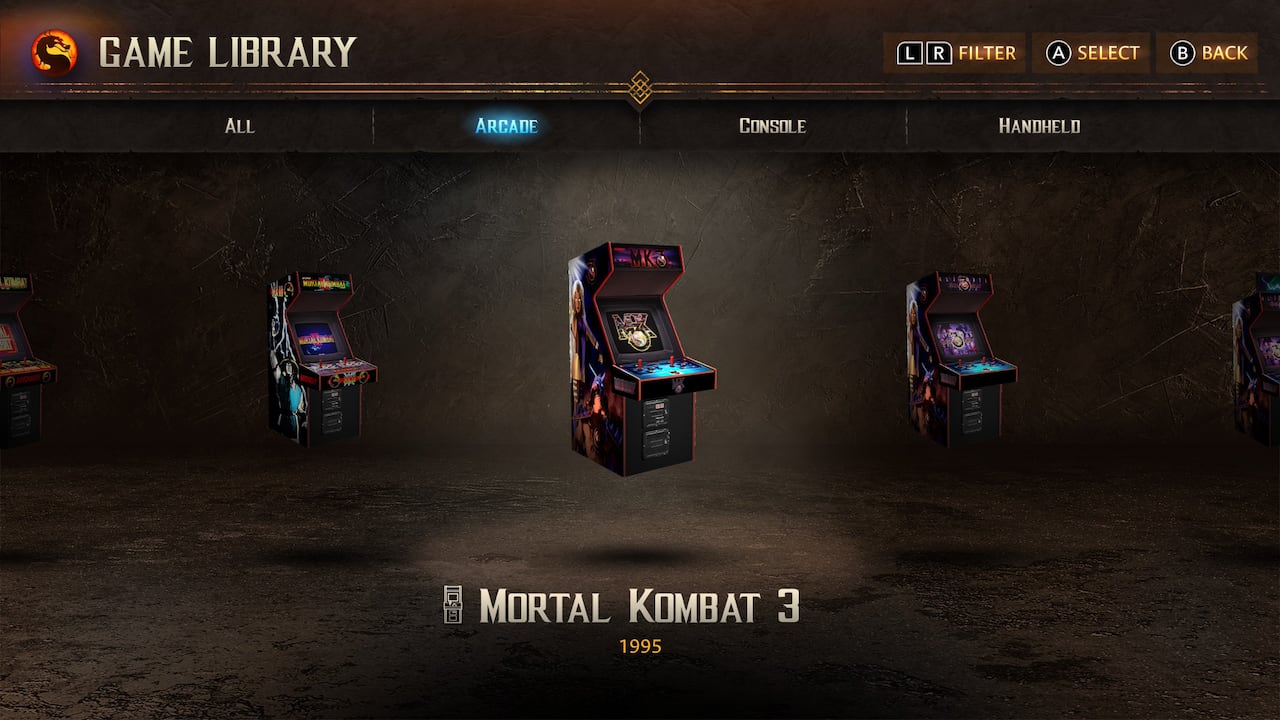I was about eight years old when I first played Mortal Kombat, the one-on-one fighting game that scandalized parents and politicians in the early 1990s.
I was playing with my cousins in the arrivals area of Toronto’s Pearson airport when I unknowingly unlocked a secret finishing move.
The ninja I was controlling, Scorpion, removed his mask, revealing a skull, and spat a fireball, setting his opponent ablaze, leaving nothing but a charred skeleton.
The word “FATALITY” flashed in green all-caps.
My eyes widened in shock. I looked at my cousins, all of us agape. That unbelievable moment was just one example why Mortal Kombat became the must-play game of 1992.
Mortal Kombat: Legacy Kollection is the latest release by Digital Eclipse, which specializes in comprehensive collections of classic game series which also document their creation and history with extensive developer interviews and archival material.
That approach mostly shines with Mortal Kombat, but the otherwise robust documentary merely glosses over the moral panic that ensued from its bone-snapping, blood-curdling action.

Hybrid game collection and documentary
Legacy Kollection includes 23 Mortal Kombat games released between 1992 and 2003. The main attractions are probably the original six arcade releases and the home versions for consoles like the Sega Genesis and Super Nintendo.
It’s probably the most comprehensive collection of this era, with surprising inclusions such as the stripped-down versions for portable systems like the Game Boy, and spin-offs like the fighting and action hybrid MK Mythologies: Sub-Zero.

A timeline, part of the interactive documentary, spends significant time on the leadup and release of the original Mortal Kombat, interviewing principal creators including lead programmer Ed Boon and artist/designer John Tobias.
To its credit, it doesn’t skip important contexts that a less scrupulous storyteller might ignore to make Mortal Kombat seem even more revolutionary than it actually was.
It wasn’t the first breakout, one-on-one fighting game: that’s Street Fighter II, which Boon and Tobias took as a blueprint.
Neither was it the first to include copious amounts of blood, nor to digitize photos and videos to make realistic human characters. NARC did both in 1990, and Atari featured the first fighting game with digitized characters with Pit-Fighter that same year.

Longtime fans will relish the depth of archival material, like footage of the motion-capture actors taking direction from Tobias and Boon, and stills from a promotional video that tried to woo Jean Claude Van-Damme to star in the original.
And yet, apart from Sal Divita and Kerry Hoskins — who played Nightwolf and Sonya Blade, respectively — we see or hear nearly nothing from the actors.
The moral panic also gets short shrift. There’s less than a minute of footage from the U.S. Senate hearings from 1993-4, though Boon, Tobias and others reflect on the aftermath — the creation of the first video games ratings system, now known as the Entertainment Software Rating Board.
WATCH | From the CBC Archives — the Mortal Kombat ‘kontroversy’:
It would have helped to hear from any politicians alive today who attended those hearings, or from those who were part of concerned parents’ groups at the time.
That may be out of the scope of a games-first company like Digital Eclipse but the package feels incomplete without a deeper dive.
The old games, for better and worse
If I’ve been talking more about the documentary materials, it might be because the Mortal Kombat games are like Jack Daniel’s whiskey: distinctive and punchy, but ultimately lacking in depth or nuance.
That said, no one drinks Jack for the nuance. The smacks of a Mortal Kombat uppercut still reverberate, and the colourful cast is as memorable as ever. But the early Kombat games were never as complex as even the other fighting games out at the time, and have aged poorly.
The home versions from Sega and Nintendo — with their muddy graphics, missing animation frames or unresponsive controls — might seem like odd inclusions compared to the immaculate arcade versions.
But it’s important to remember that many more people played these games at home than in arcades, which were already beginning to decline when the first Mortal Kombat first released.
Not only is Mortal Kombat: Legacy Kollection a heavy dose of nostalgia, it’s also fascinating to compare and contrast where certain versions went wrong while others succeeded.
You might even be surprised by a few entries. The Game Boy version of Mortal Kombat II is quite playable despite massive technical limitations, and the Genesis Mortal Kombat‘s funky soundtrack surpasses, I suggest, even the arcade original.
It’s almost inevitable that Legacy Kollection fails to encompass the footprint the series left on popular culture as a whole. But while it isn’t a flawless victory, it’s the best way to relive one of the loudest chapters in Western entertainment, and will likely stay that way for some time.







